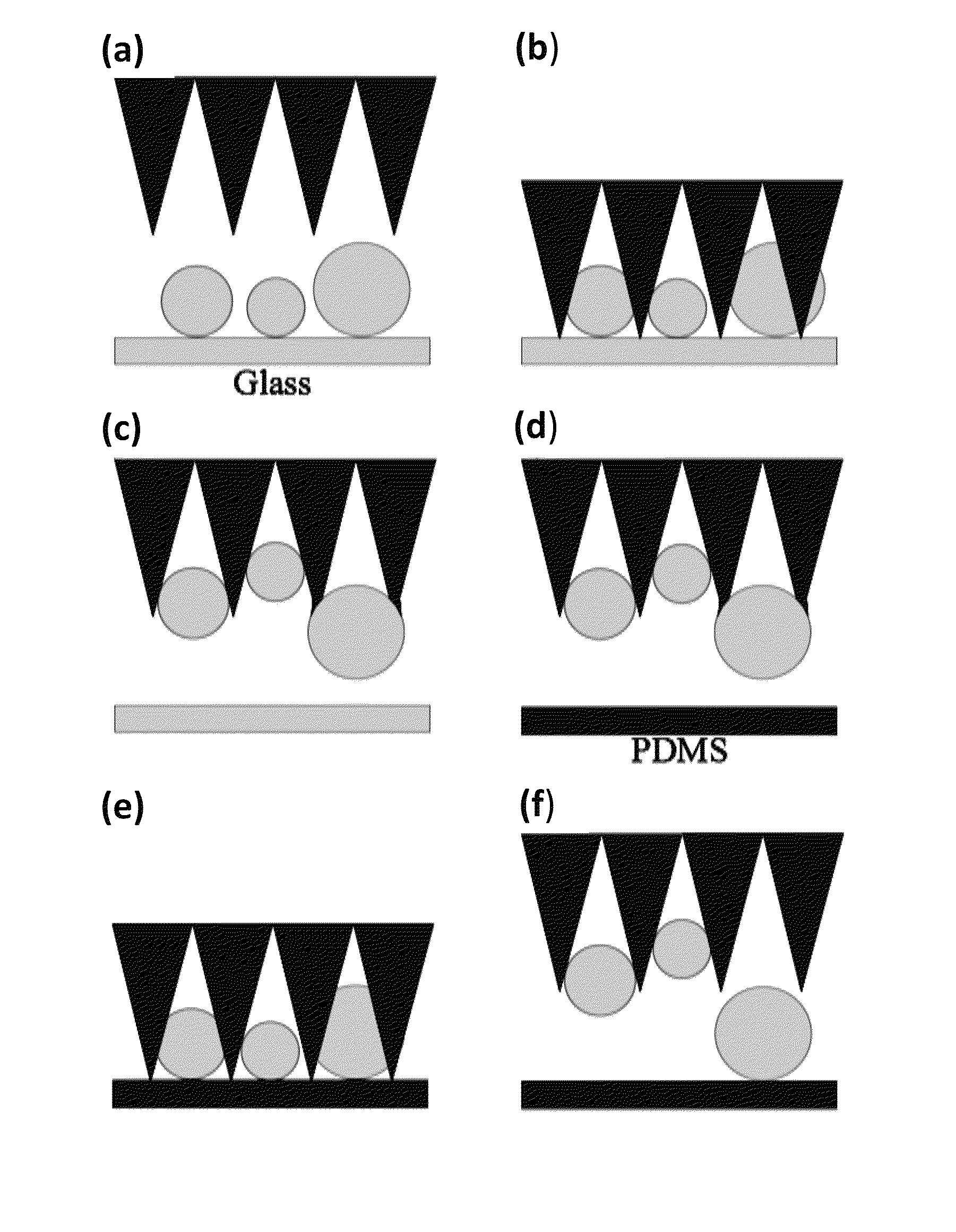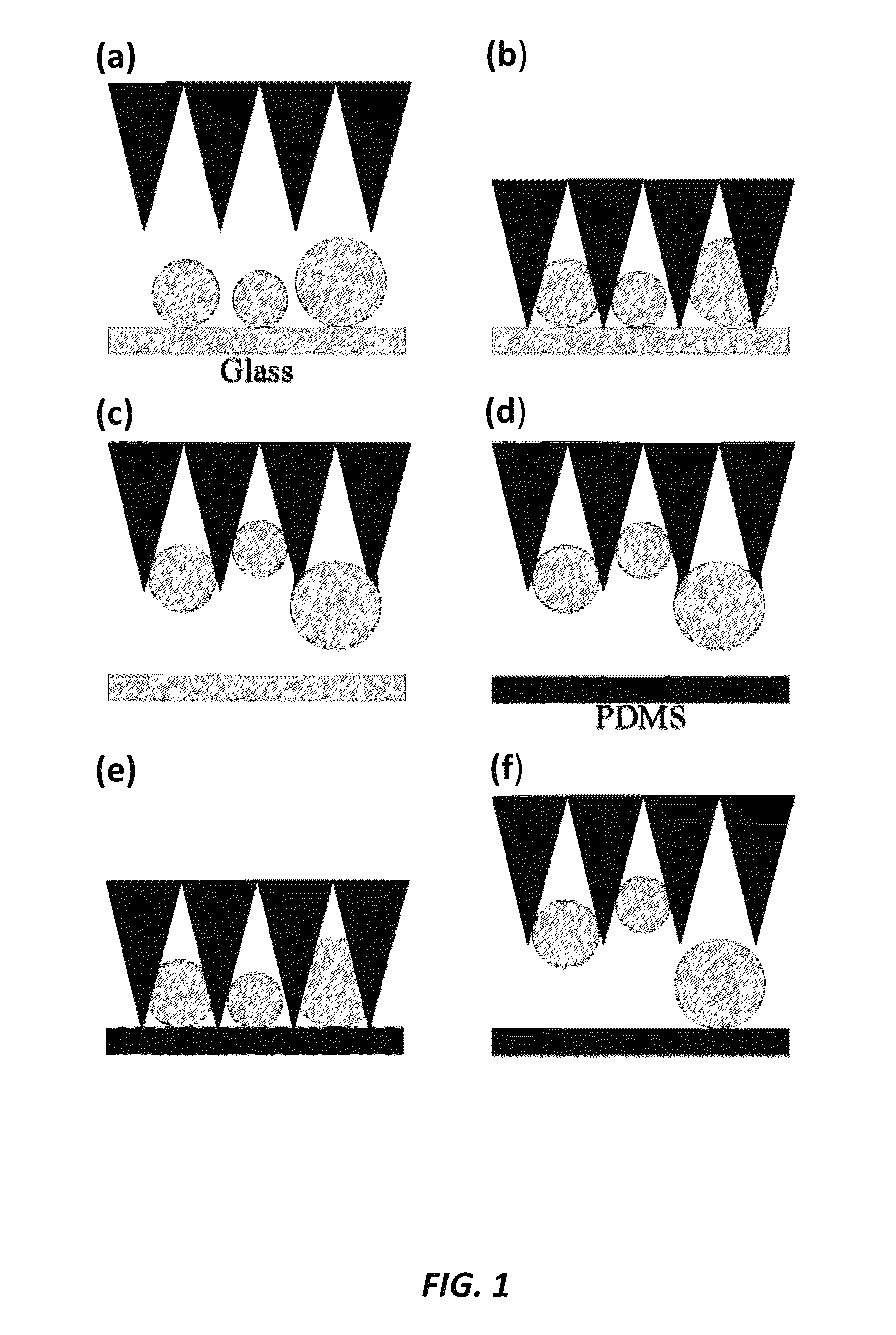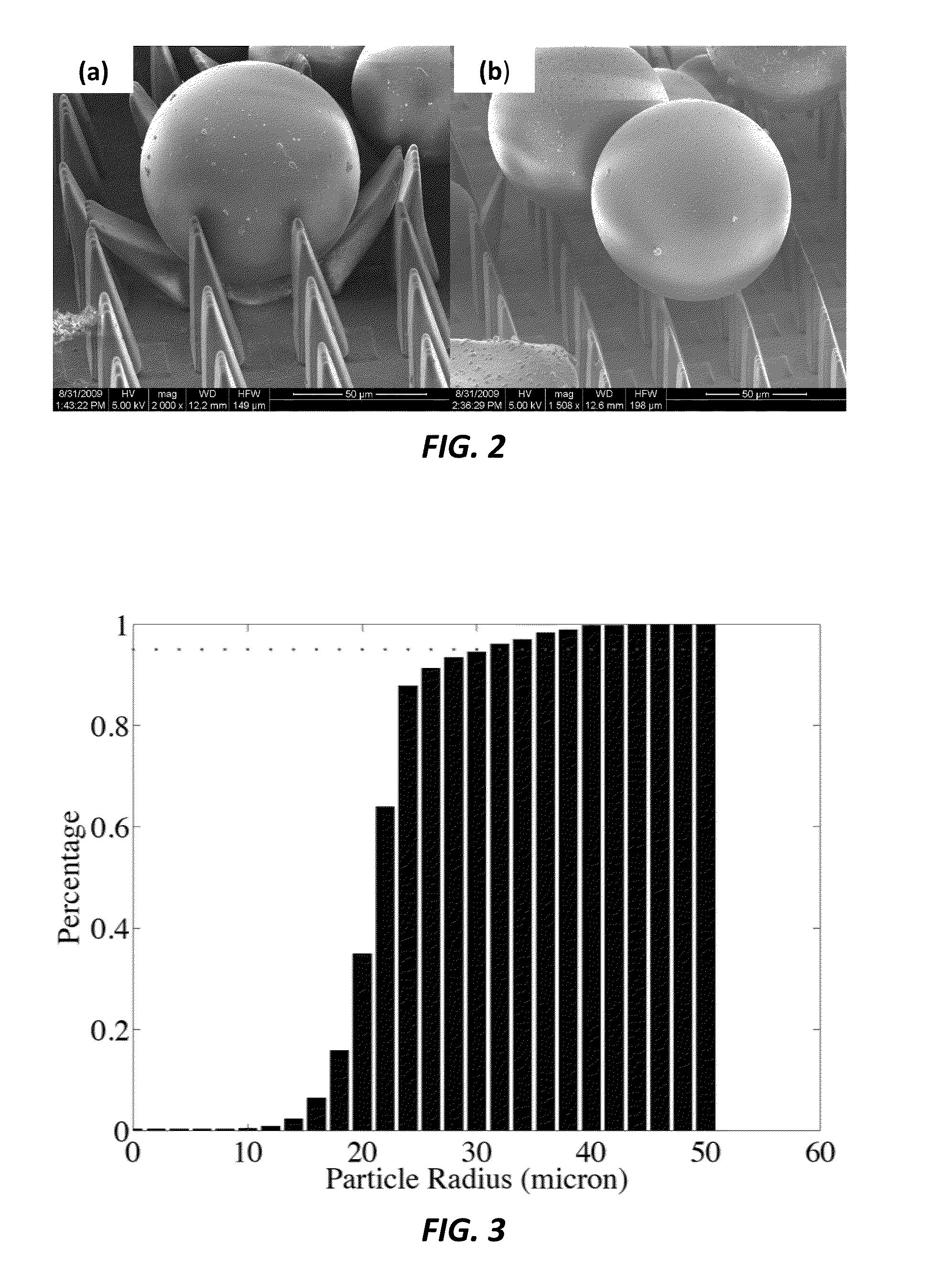Micro-structure-based adhesives for size-selective particle trapping and sorting
a microstructure and particle technology, applied in the field of adhesives, can solve the problems of fragility, cost and difficulty of wire-mesh device fabrication, and suffer from a few drawbacks
- Summary
- Abstract
- Description
- Claims
- Application Information
AI Technical Summary
Benefits of technology
Problems solved by technology
Method used
Image
Examples
Embodiment Construction
[0023]Highly reusable and inexpensive adhesives are designed to trap and selectively maintain particulate matter based on the size of the particles. The adhesives can be engineered, based on micro-structure size and design, to retain particles below a certain size range while allowing others to easily be stripped away from the adhesives making devices according to embodiments of the invention useful of particle characterization and sorting. The adhesives utilize a wedge shaped micro-structure manufactured with a micromachining technique by the inventors.
[0024]The shape of the micro-structure as well as the material from which the adhesives are made allow the adhesives to collect particulate matter of all sizes from for example a contaminated structure. Subsequently, a flat sheet of the same material as the adhesive (PDMS silicone polymer) can be applied to the contaminated adhesive and particles above a critical size limit will be removed. This leaves only particles of the desired s...
PUM
| Property | Measurement | Unit |
|---|---|---|
| height | aaaaa | aaaaa |
| radius | aaaaa | aaaaa |
| radius | aaaaa | aaaaa |
Abstract
Description
Claims
Application Information
 Login to View More
Login to View More - R&D
- Intellectual Property
- Life Sciences
- Materials
- Tech Scout
- Unparalleled Data Quality
- Higher Quality Content
- 60% Fewer Hallucinations
Browse by: Latest US Patents, China's latest patents, Technical Efficacy Thesaurus, Application Domain, Technology Topic, Popular Technical Reports.
© 2025 PatSnap. All rights reserved.Legal|Privacy policy|Modern Slavery Act Transparency Statement|Sitemap|About US| Contact US: help@patsnap.com



